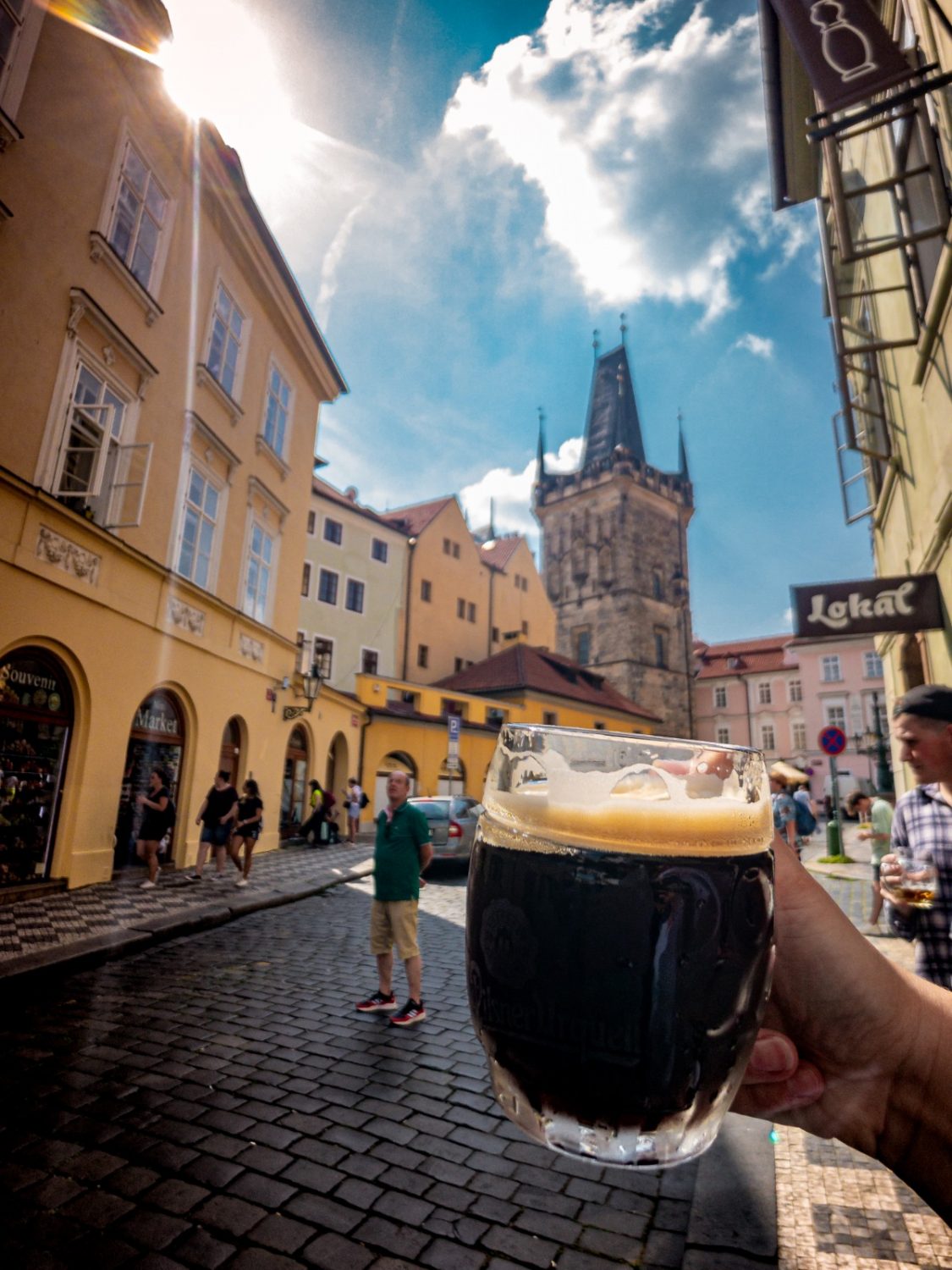Prague is, without a doubt, one of the most beautiful cities in the world. Walk through the streets, admire the amazing architecture and discover its history. If you like to take photographs, make sure to have extra batteries, as you will need them. 🙂
So, let’s dive in!
Quick note. This is the ideal itinerary to cover the most popular tourist sites in the city and outside Prague. Although, it is based on many tours that I provided for my clients in the last years, feel free to change. Let me know if you have any questions.
Day One: Old Town and New Town
Firstly, let’s start your day with an early morning walk to the Old Town Square. The Old Town Square is the heart of the city and the former marketplace. Many buildings with stunning architecture enclose it. Many locals and visitors consider it one of the most beautiful squares in Europe.
On one side of the Square sits the Old Town Hall, recognized by its Gothic tower and Astronomical Clock. It was established in the 14th century and used as a town council seat. The tower is almost 70m high and offers a great view of the city. Spoiler alert: There is a lift that takes you to the top, so do not need to take the stairs. Only a few people know that Town Hall was damaged in the last days of World War Two, during the Prague Uprising events, on May 8th 1945.
Moreover, make sure you reach the Astronomical Clock at the top of the hour. You will witness the famous Clock show. A procession of the twelve Apostles while the skeleton statue is ringing on its small bell. This “show” takes only 1 minute, but make sure you see it. It is worth it.
💡 Did you know? The oldest written evidence about the Astronomical Clock is from 1410. Its original purpose was not to tell the time but to show the orbit of the sun and the moon. Click here to read more about the Clock and its secrets.
Another not-to-miss building is the Church of Our Lady before Týn (or, Týn church), built during the reign of the Holy Roman Emperor Charles IV. Consequently, the church was connected with the religious reform movement of the Hussites. Between the church’s towers, you can find there a golden chalice, the symbol of Hussites. The statue of Madonna above stands for the Catholic church.
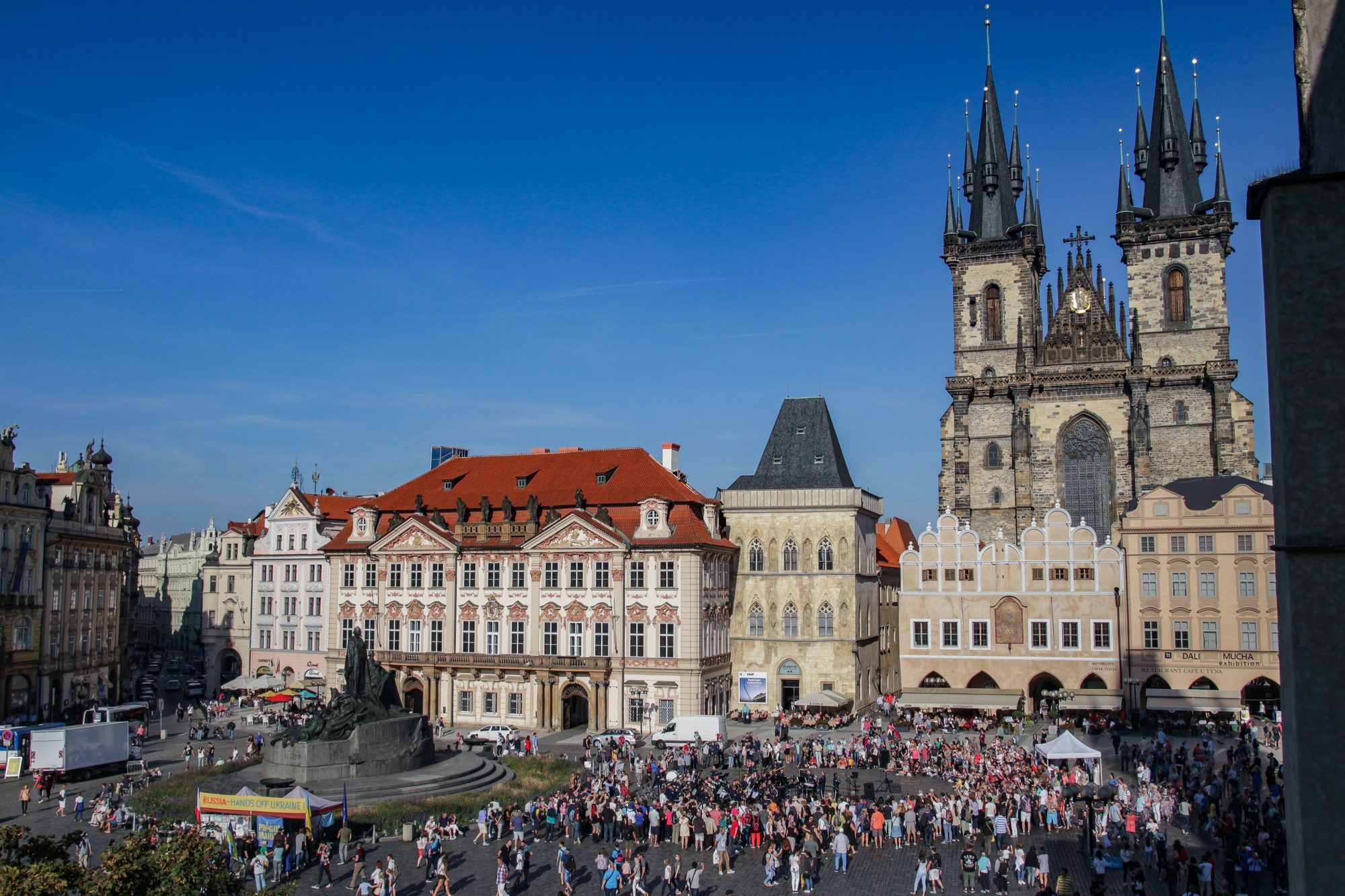
Next to the Old Town Square, behind the church of St. Nicholas, is the medieval Jewish Ghetto, known as Josefov. It is not only the history of the Jewish community but also its architecture that makes it one of the most interesting parts of Old Prague.
Once you buy a ticket for the interiors, you can visit medieval synagogues. Many of them are from the 16th and 18th century. You can also walk through the Old Jewish Cemetery, the oldest Jewish cemetery in Europe. The highlight is the 13th-century Old-New Synagogue, the oldest functioning synagogue in Europe.
💡 Did you know? Hitler gave an order not to destroy the Jewish Quarter. He decided to use the synagogues as the exhibition halls for a new museum, “Museum to an Extinct Race”.
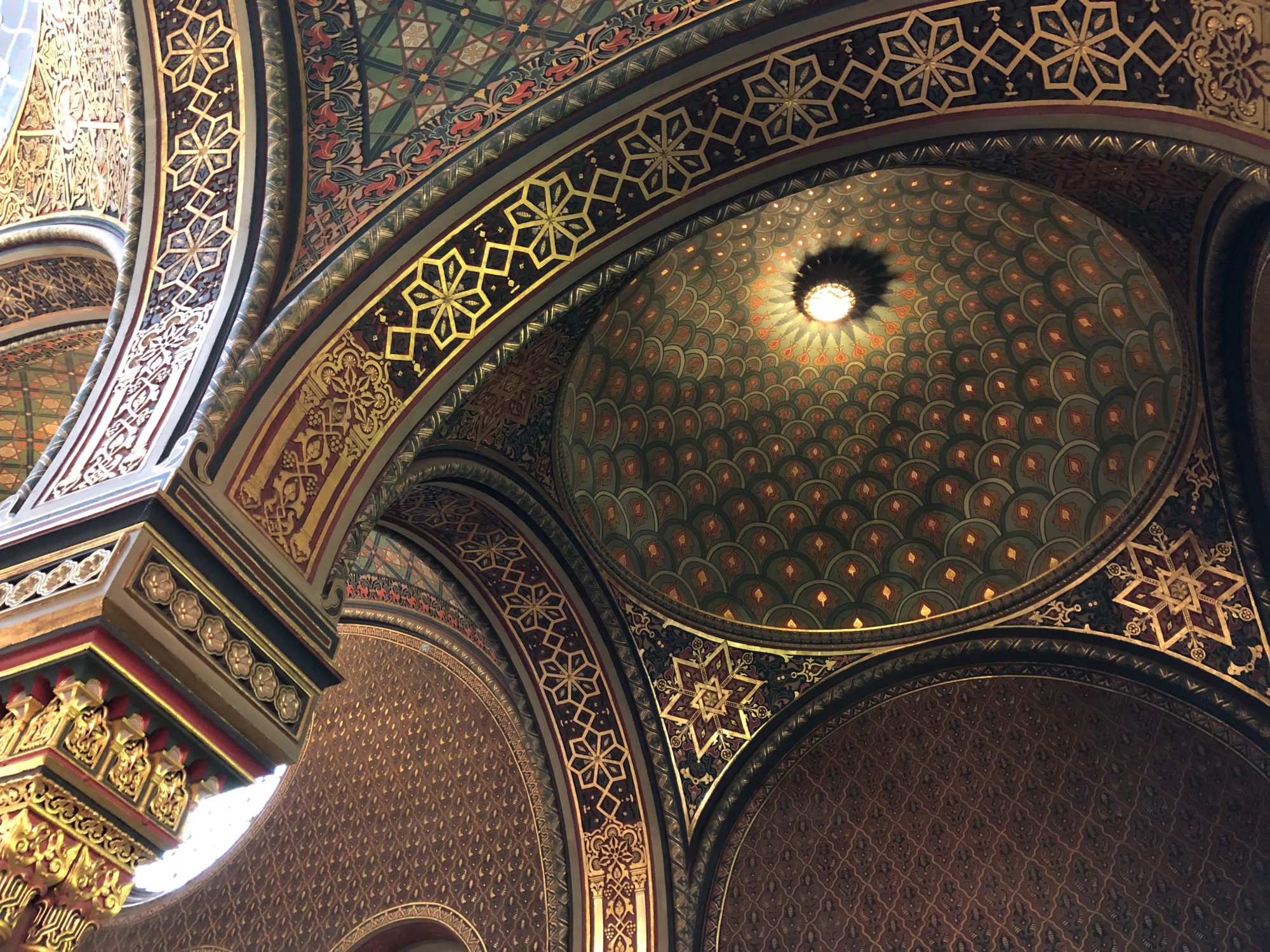
The New Town, founded by Emperor Charles IV in 1348, is not a very new part of the city. Formerly, its purpose was to enlarge the old city and add new marketplaces for the merchants and craftsmen. The most impressive part is Wenceslas Square (named after St. Wenceslas, or Václav, the Duke of Bohemia). It is linked on both sites by more or less impressive buildings, used as hotels, restaurants, offices and shops. At the upper part is the impressive Neo-Renaissance National Museum. Generally, there are several exhibitions about the vast history of the Czech lands. Museum underwent the renovation in 2018.
💡 Did you know? Czechoslovakia was a Communist country between 1948 and 1989. Wenceslas Square was the place where crucial moments from the Communistic history happened. In 1968, after the invasion of the army of the Warsaw Pact, the most severe fights took place on this square. This was the Prague Spring. In 1989, the events known as the Velvet Revolution started on the very same square as well. The Velvet Revolution led to the end of the Communist regime in former Czechoslovakia.
Following the day, take a walk to the Vltava River. Start close to the National Theatre and continue down to the Charles Bridge. Enjoy the sunset over the Prague Castle.
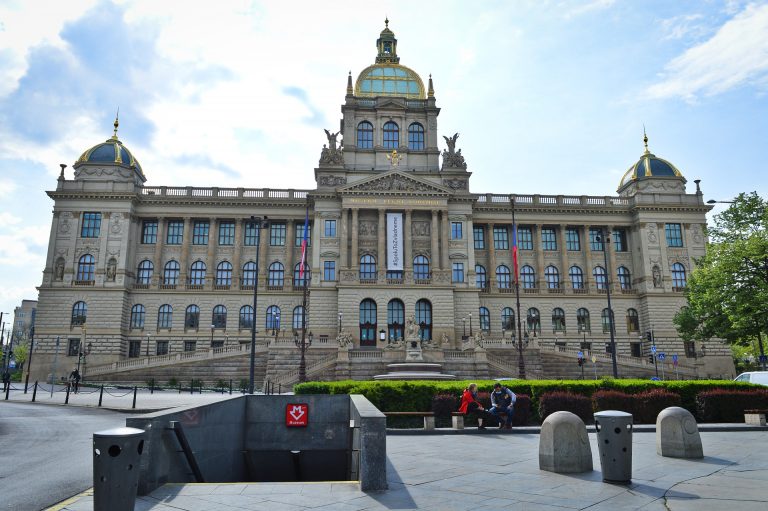
Not to miss:
-
Old Town Square
-
Astronomical Clock
-
Church of Our Lady before Týn
-
Old Town Hall and its Tower
-
-
Powder Gate
-
Municipal House
-
-
Old-New Synagogue
-
Old Jewish Cemetery
-
Pinkas Synagogue (Memorial to the Victims of Shoah)
-
Maisel Synagogue
-
Klausen Synagogue
-
Spanish Synagogue
-
Ceremonial Hall
-
-
Wenceslas Square
-
National Theatre
-
Walk along the Vltava River
💡 Insider Tip
Prague is a walking city. Do not spend your money on a taxi, walk! The distance between the most famous sites listed in this guide is very short. I recommend using the tram no.22 to get up to the Prague Castle district. Otherwise, walk and enjoy the streets of Prague.
Day Two: Prague Castle District and Charles Bridge
Start early in the morning. It gives you more time to explore the city with fewer people on the streets. Take a tram or taxi to Prague Castle. Then enjoy the walk through the largest medieval castle complex in the world.
Prague Castle is currently the seat of the Czech President. But it was the seat of all Czech kings in the past. It dates back to the 10th century, but some buildings were built even in the 20th century. There are two ways how to explore the Castle. Take a walk through its courtyards, or buy a ticket and visit interiors.
Whatever you decide, make sure you walk inside the St. Vitus Cathedral (one part is for free). Unquestionably, this is the most important and impressive church in all countries. Its construction was started by Emperor Charles IV in 1344 and was completed in 1929 (yes, it took 585 years!). Furthermore, the Cathedral is the seat of the Archbishop of Prague. You can find there the crown jewels and tombs of the Czech kings (among them Charles IV and St. Wenceslas).
💡 Did you know? Czechs believe the legend that any usurper who places the Crown of the St. Wenceslas on the head will die within a year. Nazi ruler Heydrich, known as the Butcher of Prague, might put the crown on his head. In less than a year since his arrival, he was assassinated. Just a coincidence?
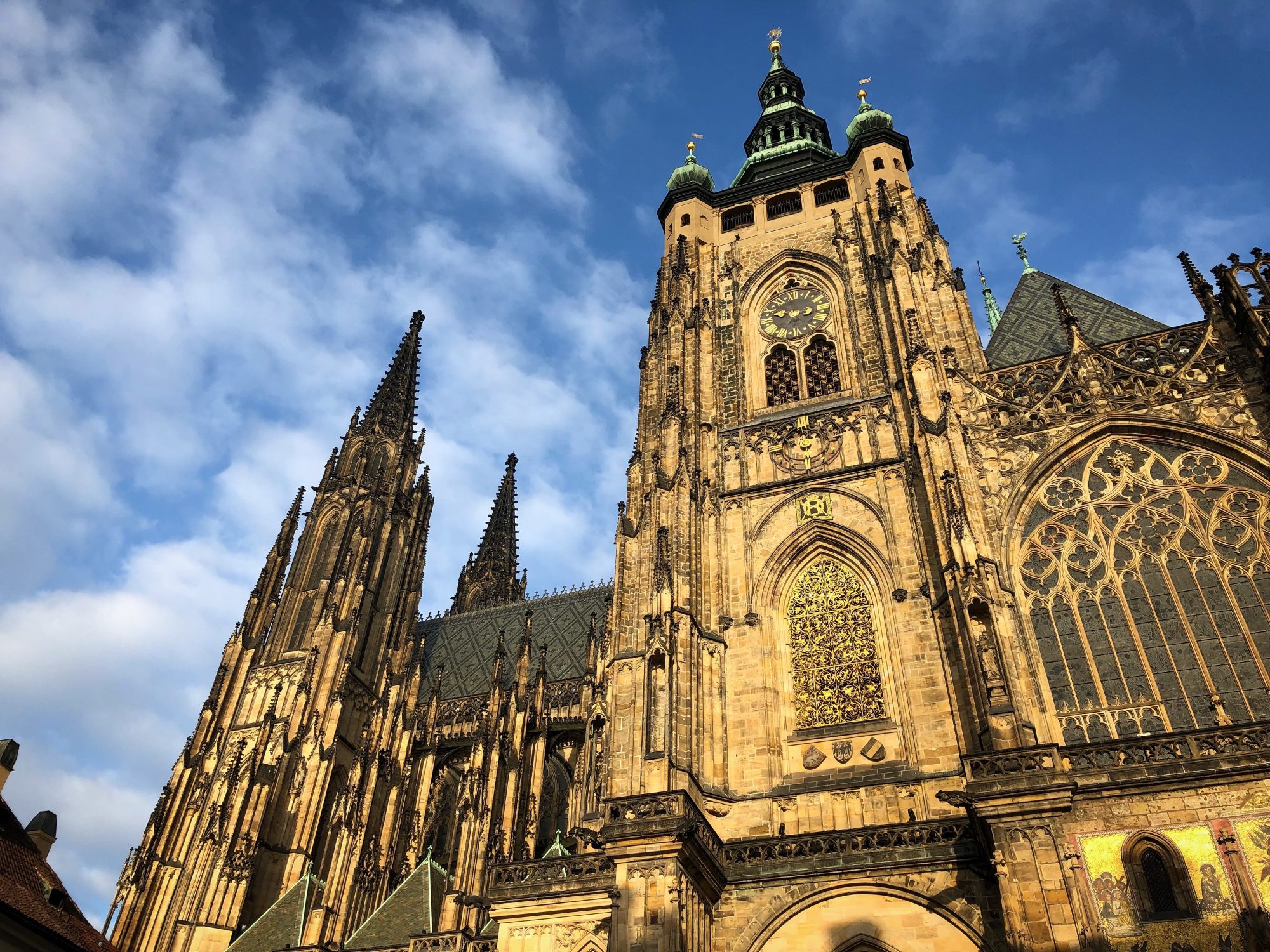
Lastly, Southern Gardens provides an amazing view of the city. Make sure you reach the three entrances at the top of the hour to see the ceremony of Changing of the Guards. The main ceremony is at noon in the 1st courtyard. Do not miss the Golden Lane. This narrow street is named after goldsmiths who lived there in the 17th century. Golden Lane was home to many writers, such as Jaroslav Seifert (Nobel-prize poet) and Franz Kafka.
💡 Insider tip: Golden Lane is accessible only with a ticket for the interiors of Prague Castle. Yet, every day, after the official closing time, is open for free: 4 pm in the winter season, 5 pm in the summer season.
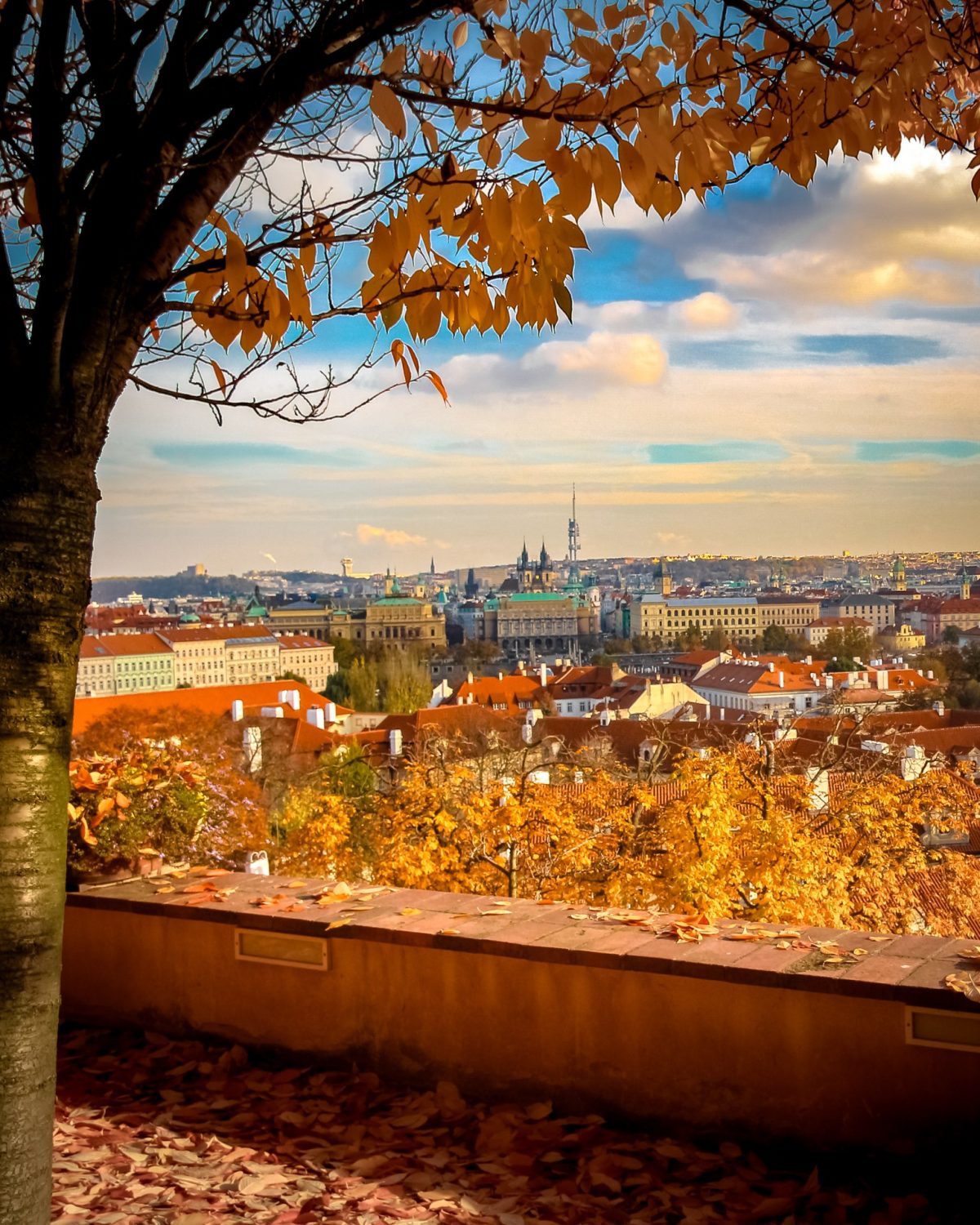
After you visit Prague Castle, continue walking a little bit up the hill to Strahov Monastery. Eventually, you can stop for lunch in some of the recommended restaurants or walk straight to the Monastery. Make your guide to book privileged access to the Monastery Library. It will be the highlight of your visit.
💡 Did you know? Prague is very popular for moviemakers. Let’s mention some of them: Mission: Impossible 1 and 6, Amadeus, Bourne Identity, Spiderman: Far From Home, and James Bond: Casino Royale.
After the visit to Prague Castle district and Strahov Monastery, walk down to the Little Quarter. This charming area is rich in Baroque palaces and gardens (Wallenstein Garden or VrtbaGarden) and Renaissance houses. The centre has always been the Church of St. Nicholas whose stunning interior will leave you breathless. Moreover, do not miss John Lennon Wall and LittleVenice.
In the end, walk to Prague’s most famous monument, Charles Bridge.
14th century Charles Bridge is named after its founder Emperor Charles IV, and connects the Old Town and Little Quarter. For centuries, this was the only bridge in the city. Even 31 statues of saints provide the amazing gallery, the most famous is the statue of St. John of Nepomuk, vicar-general of the Archdiocese. He was imprisoned and killed by the order of the King Wenceslas IV. As the legend says John did not reveal the confession of the queen. Many people touch the relief below the statue for good luck.
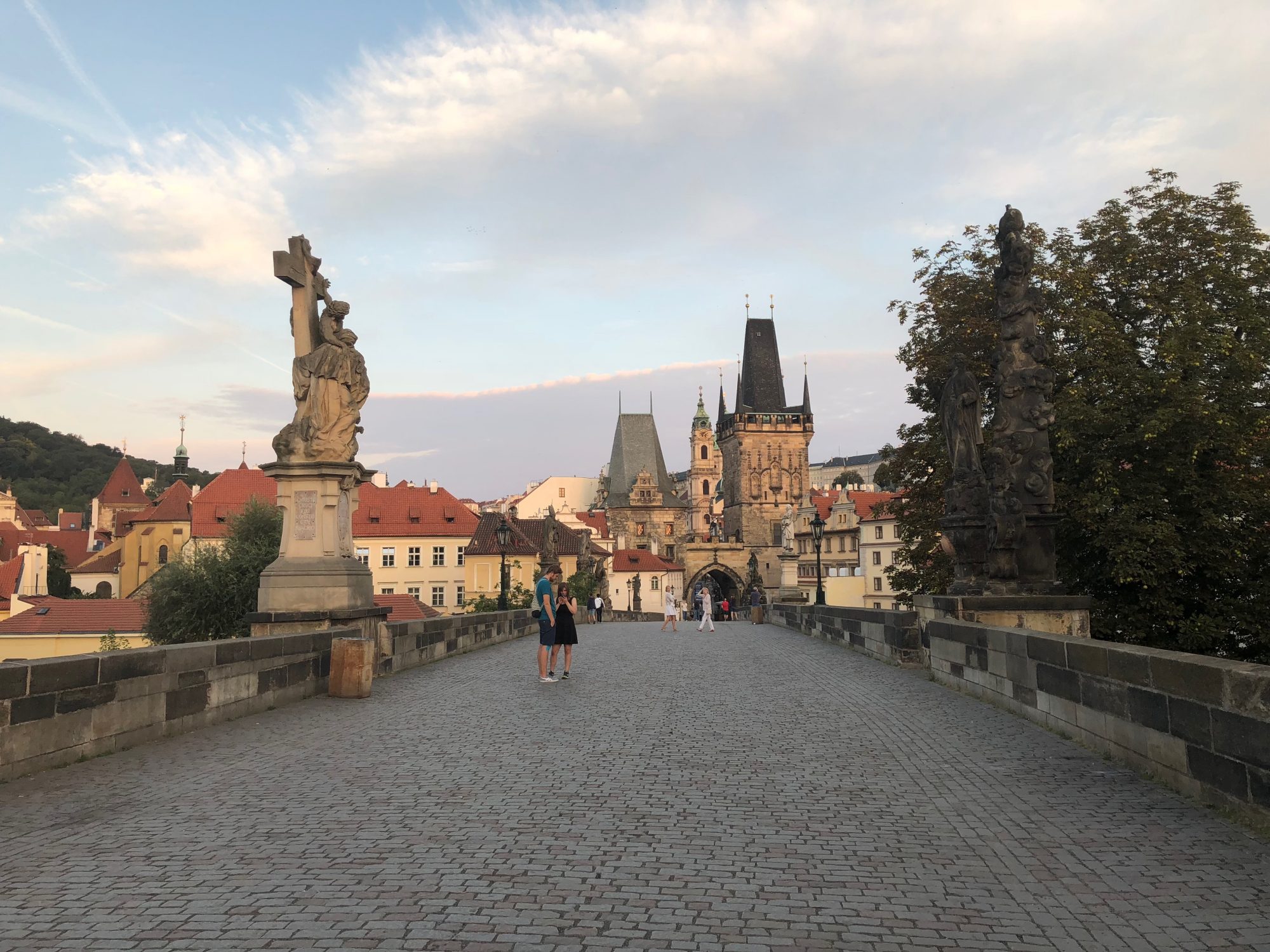
Not to miss:
-
-
St. Vitus Cathedral
-
Old Royal Palace
-
Golden Lane
-
St. George Basilica
-
-
Gardens
-
Panoramic views
-
Strahov Monastery, Library and brewery
-
Wallenstein Garden
-
St. Nicholas Church
-
John Lennon Wall
-
Čertovka (Prague Venice)
Day Three: Take a trip outside Prague
Finally, when you explore the most important sights of old Prague, it’s time to go outside Prague. All of the places that you can find below are easy to visit in one day.
Not to miss:
-
Terezín Ghetto
-
Karlštejn Castle and Moser Glass Factory
-
Kutná Hora and Bone Chapel
-
Karlovy Vary
-
Český Krumlov and Hluboká nad Vltavou
Terezín Ghetto – World War Two camp
Built as a fortress against Prussia in the 18th century. Terezín was a Jewish Ghetto and a Gestapo prison for political prisoners and prisoners of war during World War Two. It is easy to reach Terezín by bus, but I would recommend taking a tour. You save time and get all the information.
Terezín has two parts – Small Fortress which was a Gestapo prison and the Terezín Town (or Big Fortress. Terezín Fortress) which was a Jewish Ghetto. Although primarily designed for prisoners from the Czech lands, there were people from other Nazi-occupied areas. Thus, it was up to 180.000 people who passed through its wall. And many of them either died in Terezín or other camps where they were transported.
Terezín Memorial has several places/buildings/museums that you can visit. You can find them all over the area and they provide an interesting insight into life in the camp.
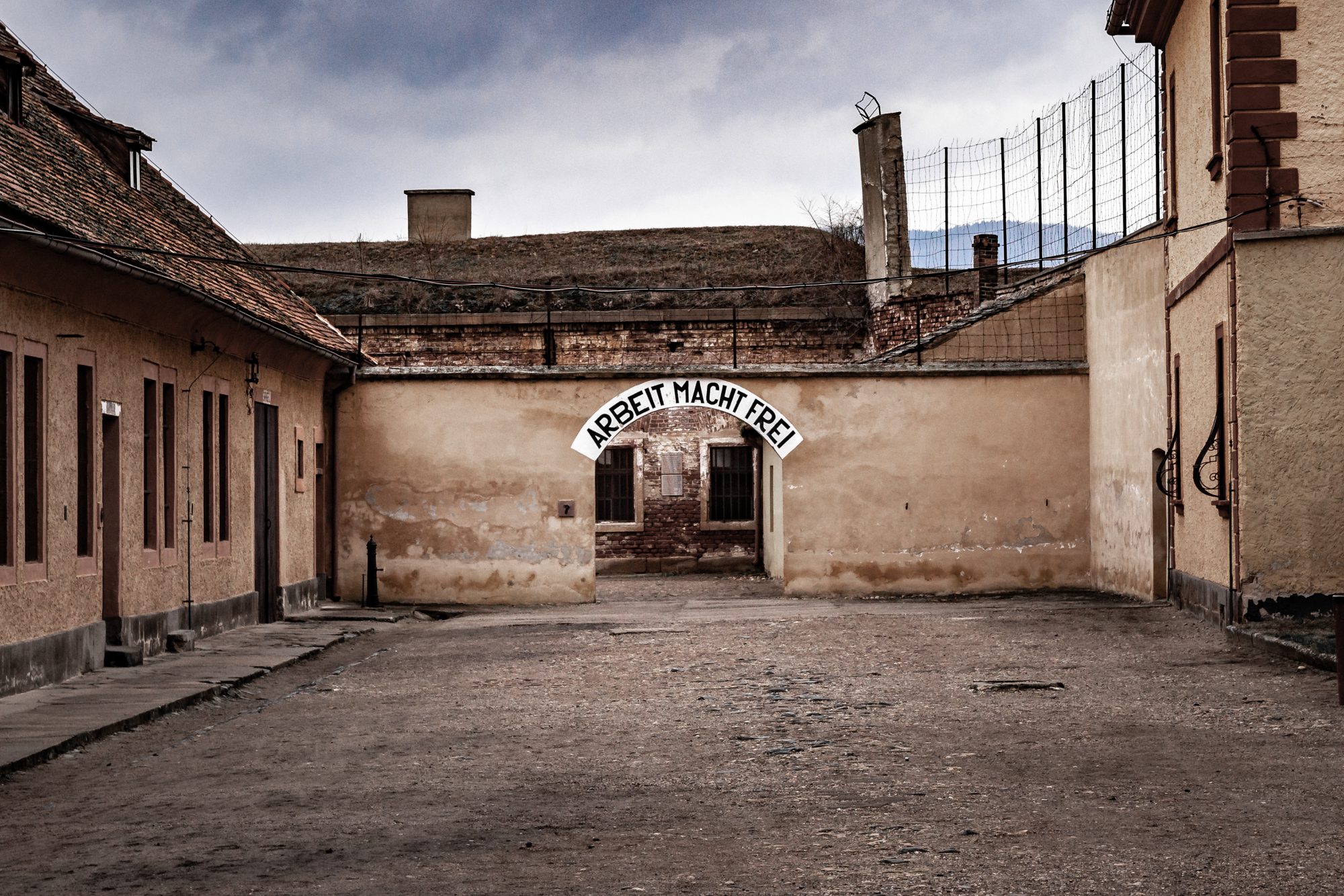
The most common questions about Terezín:
Who liberated Terezín and when?
- Soviet Red Army on May 8th, 1945
Did Terezín have gas chambers?
- No, there were no gas chambers in Terezín camp.
Is Terezín the same as Theresienstadt?
- Yes, it is the same camp/location. Terezín is a Czech name, and Theresienstadt is in German.
What does “Terezín” mean?
- Terezín was named by Josef II, after his mother Maria Theresa of Austria.
Was Terezín a concentration camp?
- Terezín was a Ghetto for the Jewish prisoners and Gestapo prison. It was also used as a transit and working camp for Jews from the Czech lands and other Nazi-occupied countries. The other part, Small Fortress, was used as a Gestapo prison for the political prisoners and the prisoners of the war.
How to get to Terezín:
-
Bus from Prague’s Nádraží Holešovice
Karlštejn Castle and Glass Factory
Karlštejn Castle is the most visited castle in the Czech Republic. Even though there are many local and foreign tourists every day, it is worth visiting. It was built in the 14th century by Emperor Charles IV to store the Czech crown jewels. Surprisingly, Karlštejn was never conquered, thanks to its inhabitants and 7m (21 feet) wide walls.
Karlštejn Castle offers several castle tours. Either you can explore the old Emperor’s rooms, enjoy the view from the High Tower (recommended!) or step inside the most important chapel in the country, the Chapel of Holy Cross. This is where the crown jewels were stored. Make sure you have a reservation as only a limited number of people is allowed to enter the Chapel.
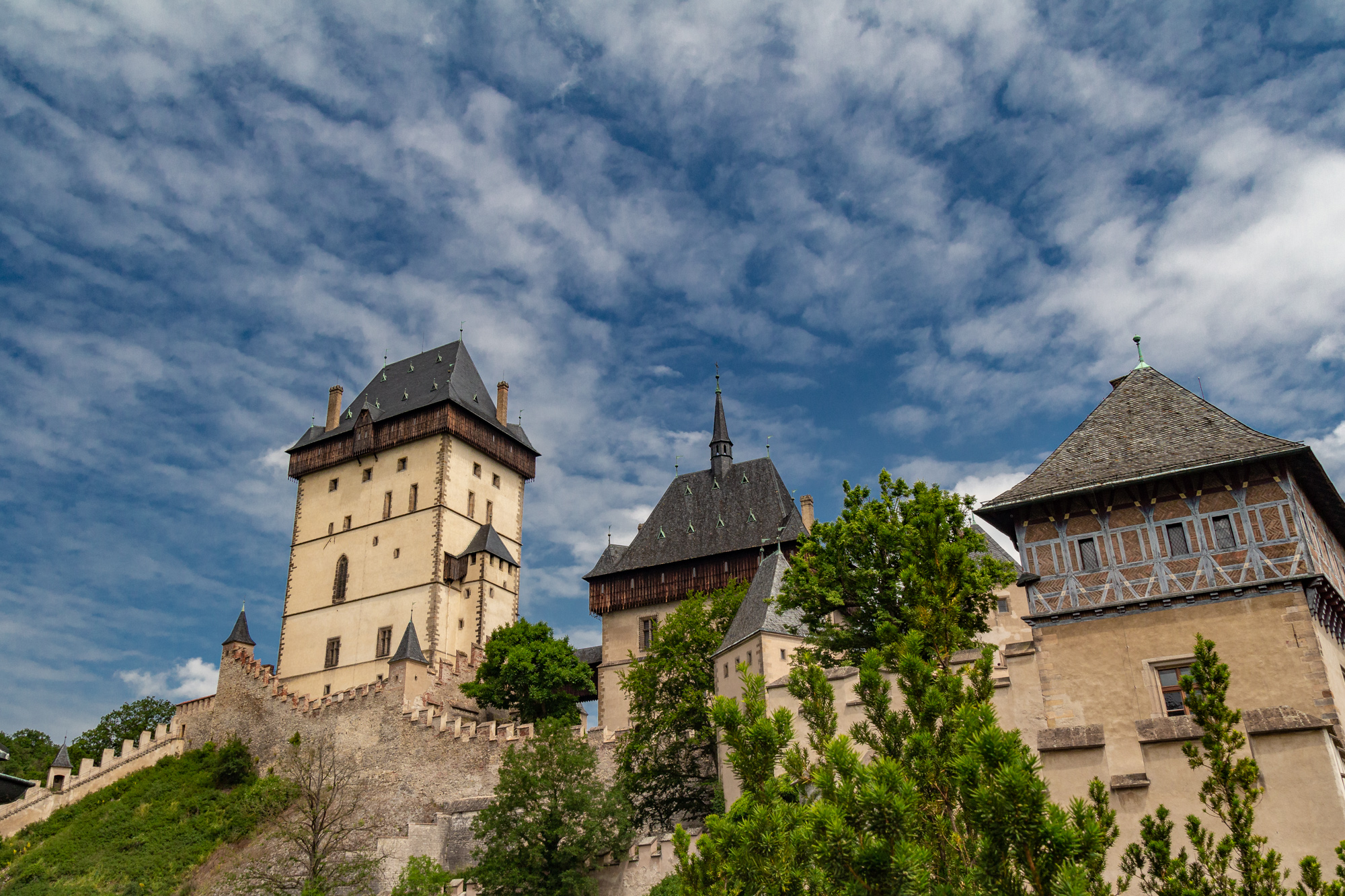
Karlštejn Castle is less than an hour from Prague. Therefore you can also include a short visit to one of the small glass factories nearby.
How to get to Karlštejn:
-
Train from Prague
Kutná Hora and Bone Chapel (UNESCO)
The UNESCO World Heritage Site of Kutná Hora is about 1 hour of drive from Prague and you can explore its two main sites.
Firstly, visit the world-famous Bone Chapel in the cemetery of Sedlec district. The chapel contains skeletons of 20.000-70.000 people. Their bones were arranged to decorate the walls of the Chapel, many of them in the shape of a cross or chandelier. Most people who visit the Chapel don’t understand why something like this was created. Well, skeletons belong to the victims of the 14th-century plaque and the 15th-century religious wars. Therefore, Bone Chapel reminds people of their responsibility towards God and “Memento mori“.
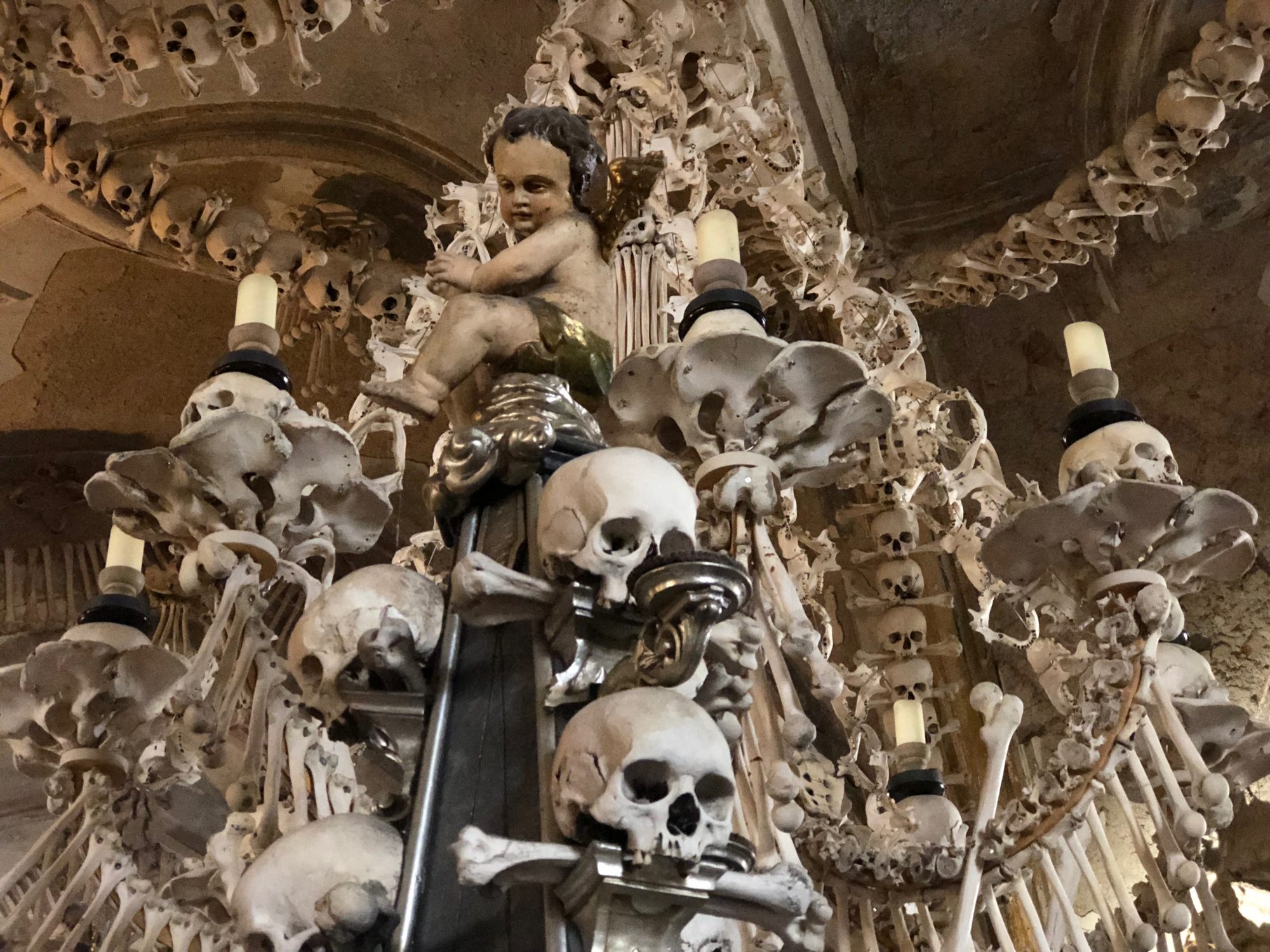
Secondly, visit Kitná Hora’s historical centre. Take a nice walk from the Church of St. Barbara down the hill to the Italian Court. Kutná Hora was one of the richest cities in Europe thanks to the silver mines. All silver belonged to the Czech king and made him the richest man in Europe. The town was home to thousands of miners and silver coin miners. Many buildings were built by wealthy families who moved there.
Lastly, if you are looking for something cool, make a reservation for a tour through the medieval silver mine. keep in mind that these underground passages are very low and narrow. Watch your head!
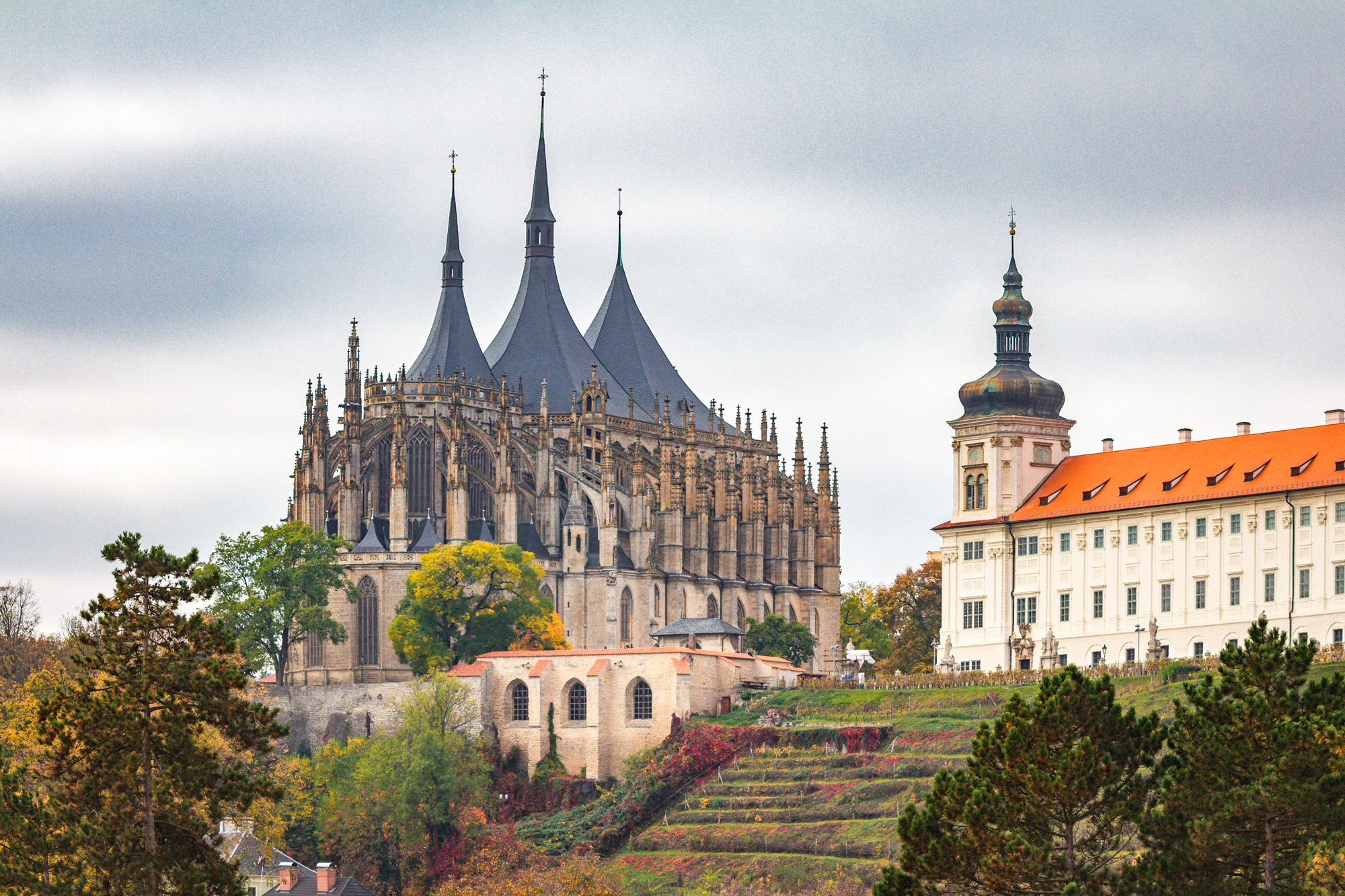
Things to do in Kutná Hora:
-
St. Barbara Church
-
Sedlec Ossuary – Bone Chapel
-
Jesuit College
-
Italian Court
-
Marian Column
-
Stone House
-
Stone Fountain
How to get to Kutná Hora:
-
Train from Prague
Karlovy Vary and Moser Glass Factory
Karlovy Vary is an ideal day trip visit from Prague for lovers of amazing architecture, nature and spa. This city, established by Charles IV, is about two hours of driving west from Prague. There are three main reasons why to visit Karlovy Vary.
Hot Springs and Colonnades
Karlovy Vary is the home to the main 13 hot springs and several hundreds of smaller ones. Although people discovered their healing power already in the 14th century, it was the 19th century that brought fame to the city. Thus, many famous people from Europe made their way to the town. Thanks to them Karlovy Vary became the most famous spa resort.
What can you heal in Karlovy Vary? So, metabolic disorders, diabetes, gastrointestinal diseases, locomotor system, obesity or neurological disorders. After your visit to Karlovy Vary, you will feel at least 30 years younger.
The right way to enjoy the city and the healing water is to have a special cup. Then you drink the water from the spring that your doctor described to you. If you visit Karlovy Vary only for a day, start your walk from the Park Colonnade. Then continue to the Mill Colonnade, Market Colonnade, Castle Colonnade and Hot Spring. Taste the water (a little bit) from each of the springs you pass. Hence, as you are approaching Hot Colonnades it is getting hotter.
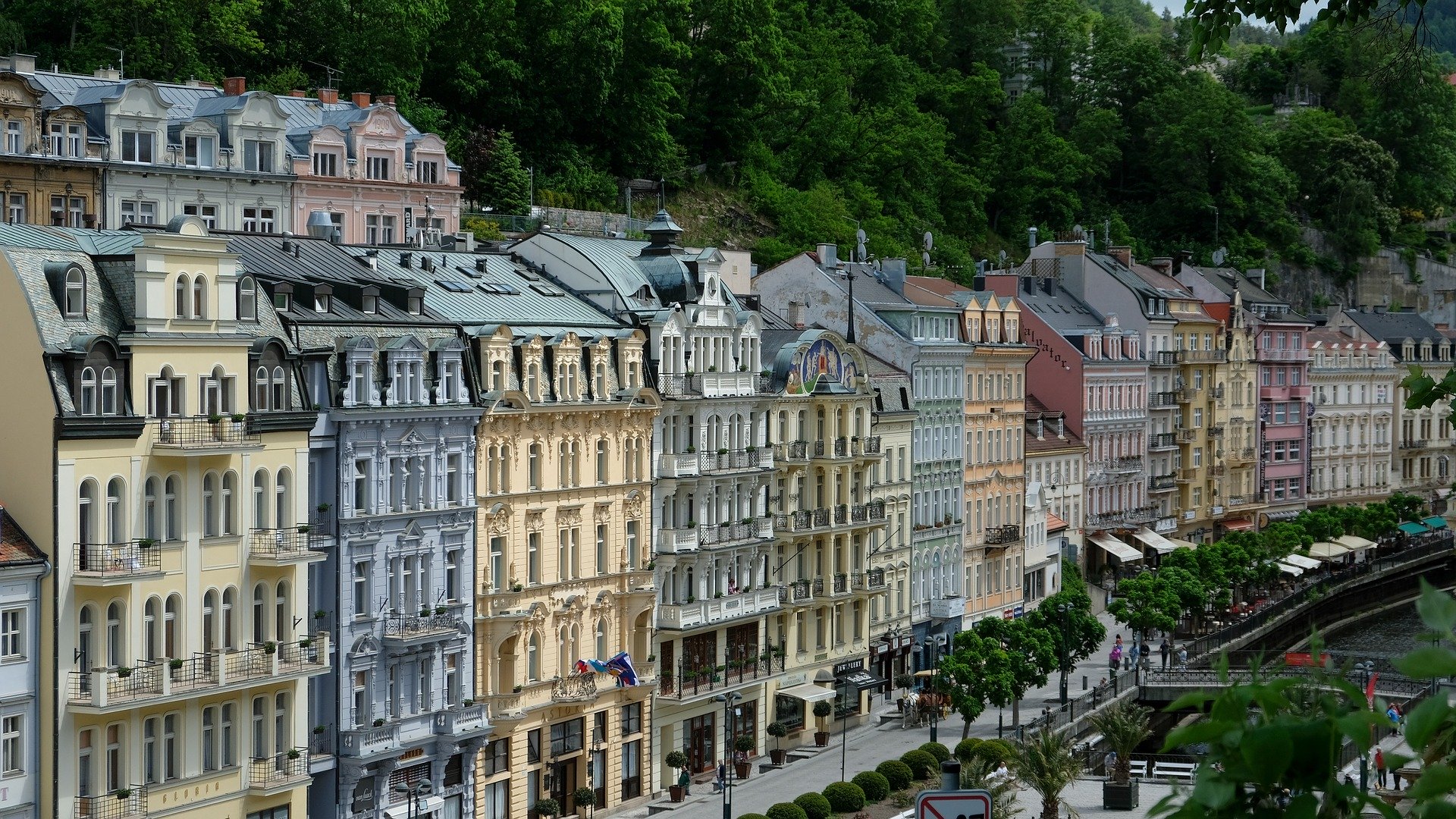
Notable visitors in Karlovy Vary:
Peter I. of Russia, Johann Wolfgang Goethe, Frédéric Chopin, Ludwig van Beethoven, Mustafa Kemal Ataturk, etc.
Moser Glass Factory
Undoubtedly, Moser Glass Factory is the most famous brand of Bohemian Crystal. Its tradition goes back to the half of the 19th century. Even today, all the products, from the simple cups to the most elaborate vases, are handmade. Therefore, it is always a pleasure to visit the factory and to experience the skills of glass masters. Additionally, Moser Factor has its factory shop where you can buy crystal products for much better prices than in Prague. 🙂
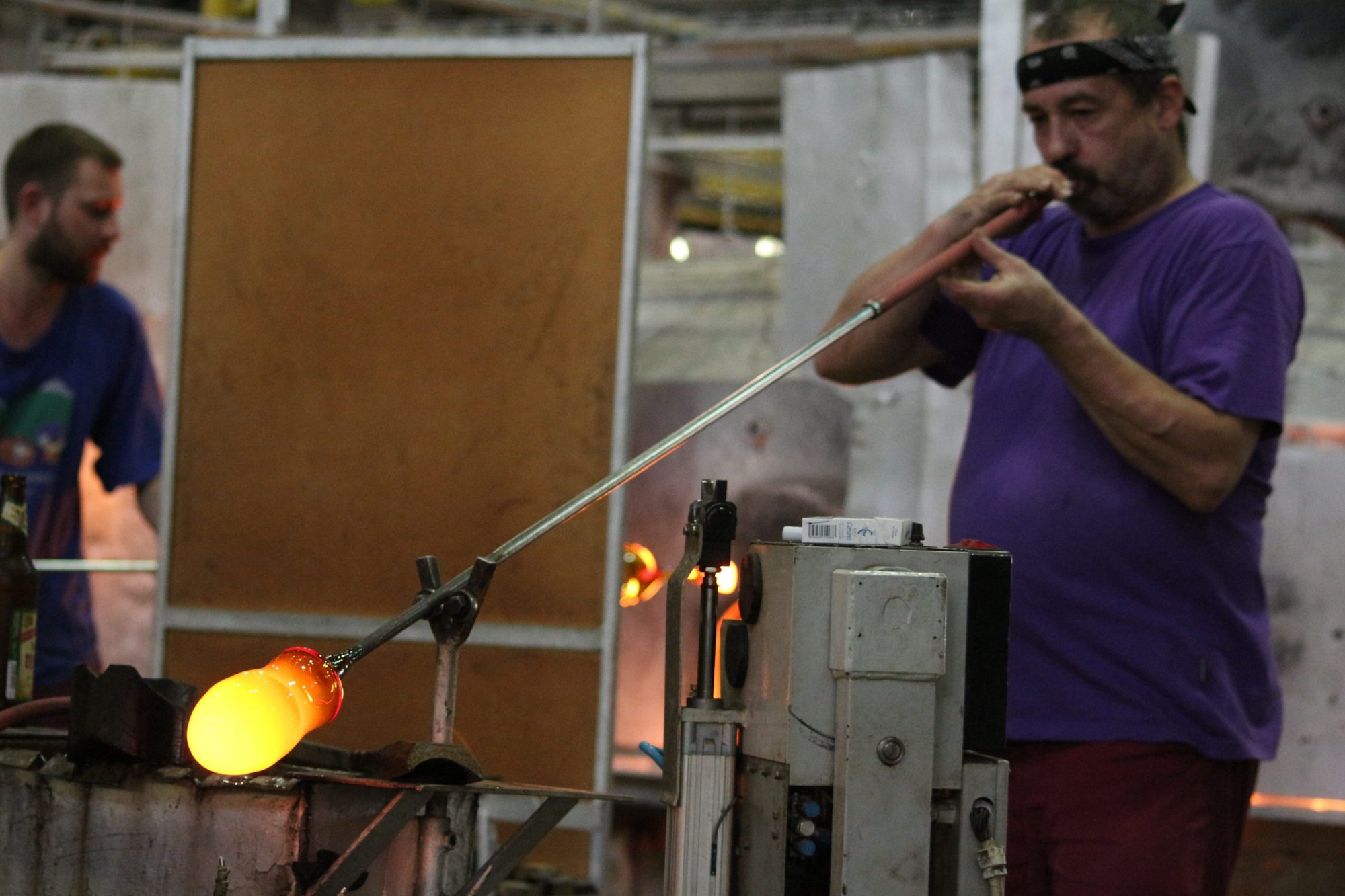
Architecture
The architecture of the city is simply amazing. Most of the buildings are from the peak of European architecture, 19th and 20th century. Furthermore, there are also some more contemporary sites, such as Hotel Thermal (1967-1976). Some people like it, some hate it. You decide.
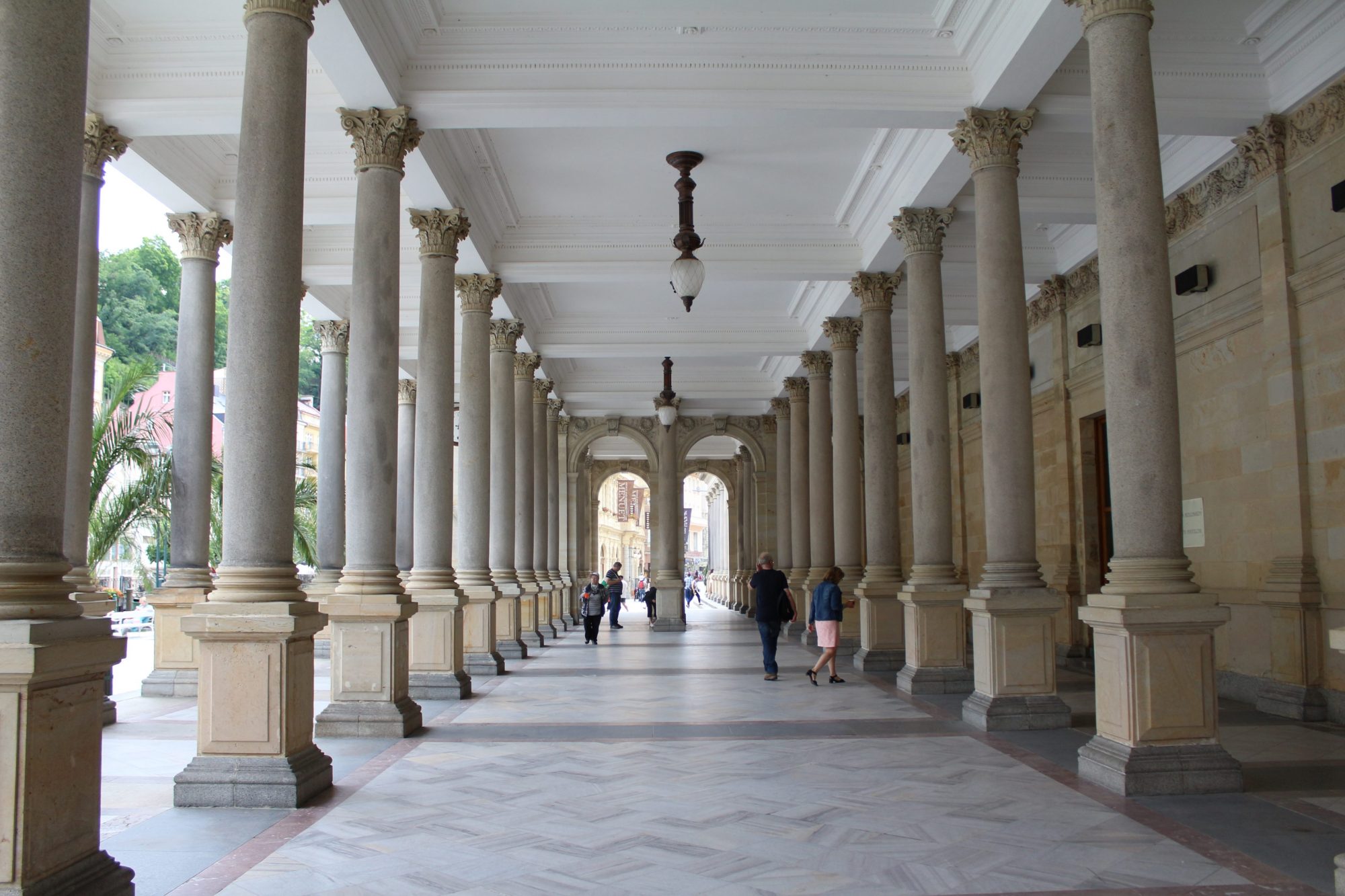
Český Krumlov (UNESCO) and Hluboká nad Vltavou
Český Krumlov is an amazing UNESCO World Heritage Site worth visiting. It takes you about two hours to drive from Prague. Before you reach Český Krumlov, make a short stop in Hluboká nad Vltavou. It is the home of the castle that transforms you into your childhood fairy tales. The castle itself is quite old and went through several reconstructions. The current version is from the 19th century. And yes, the inspiration was in the royal castle, Windsor.
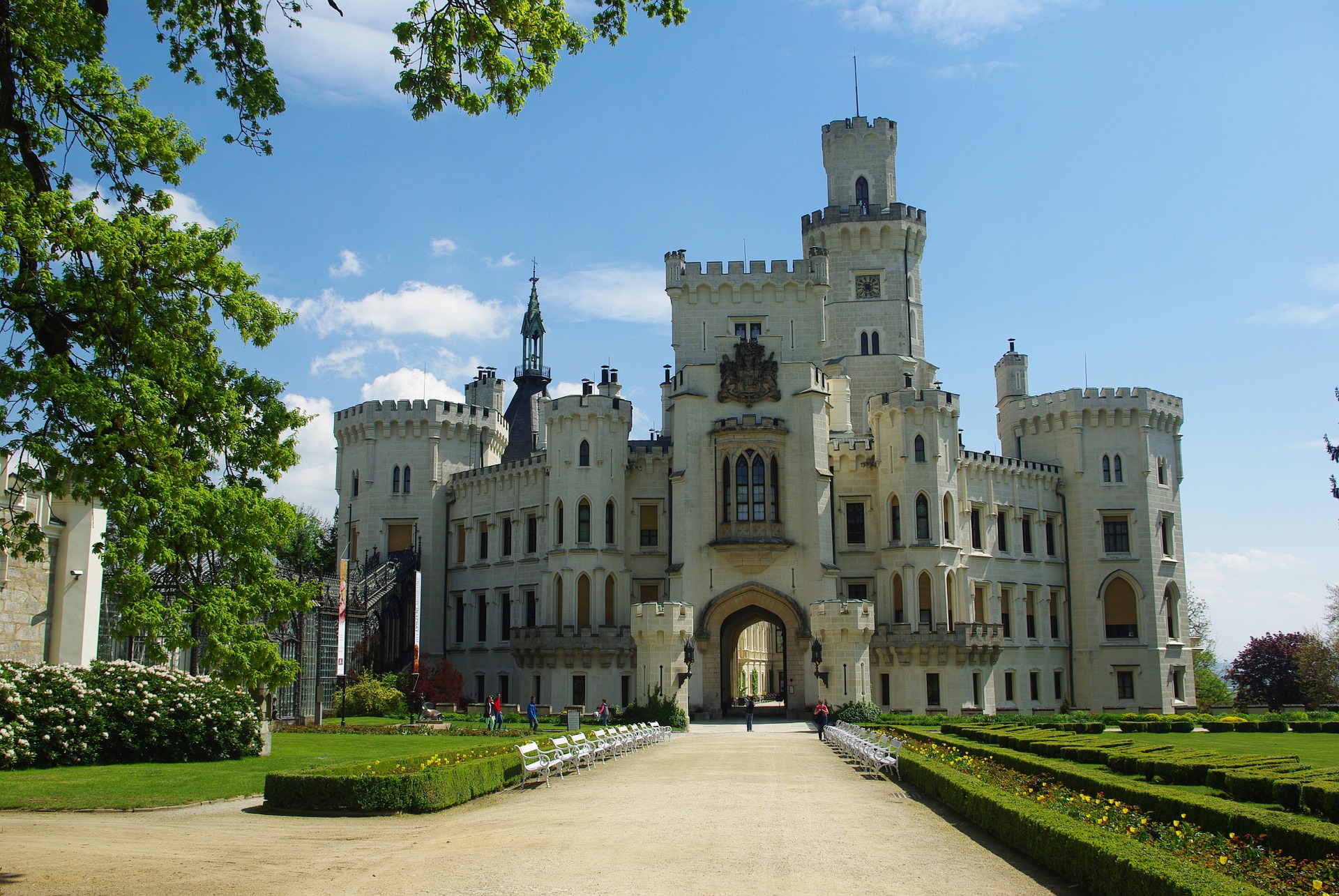
Český Krumlov offers Castle where you can take some tours and explore its interiors. I recommend you book a tour through the Baroque Theatre which is the best preserved in Europe. The best views of the city are from the Castle garden.
Yet, the most beautiful part of Český Krumlov is its historical centre. Stroll through its medieval narrow streets and enjoy the architecture. There are also some nice shops and restaurants to stop by. Or, if you feel for it, you can even set up a rafting trip (this is what locals love to do).
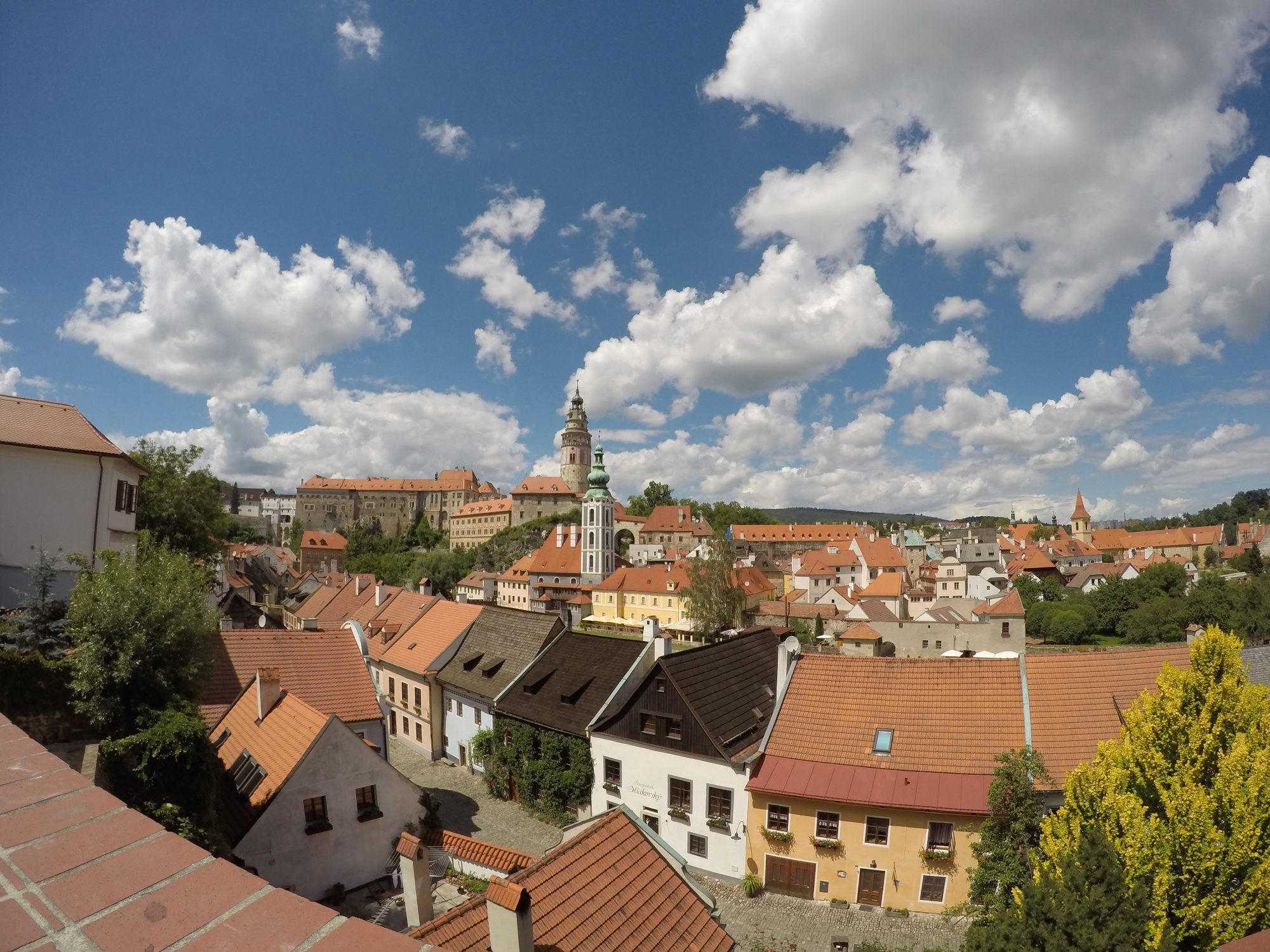
How to get to Český Krumlov:
- Train or bus from Prague
- Private tour
Did you know? The UNESCO World Heritage Sites recognized the importance of these 14 sites in the Czech Republic (2019).
-
Kutná Hora: Historical Town Centre with the Church of St Barbara and the Cathedral of Our Lady at Sedlec
-
Tugendhat Villa in Brno
Where to eat in Prague
Because there are so many restaurants, this is the list of a few I recommend you visit. Almost all of them I tried on my own, so it’s not some tourist traps.
If you need more recommendations, feel free to write to me.
Old Town
-
Mincovna
-
Lokál
-
Café Mozart
-
U Modré kachničky
New Town
-
Špejle
-
Kantýna
-
Tiskárna
-
Café Imperial
-
Café Louvre
Prague Castle District and around Charles Bridge in Lesser Town
-
Klášterný pivovar
-
Kuchyň
-
Lokál (Míšenská Street) nearCharles Bridge
-
Hergetova cihelna
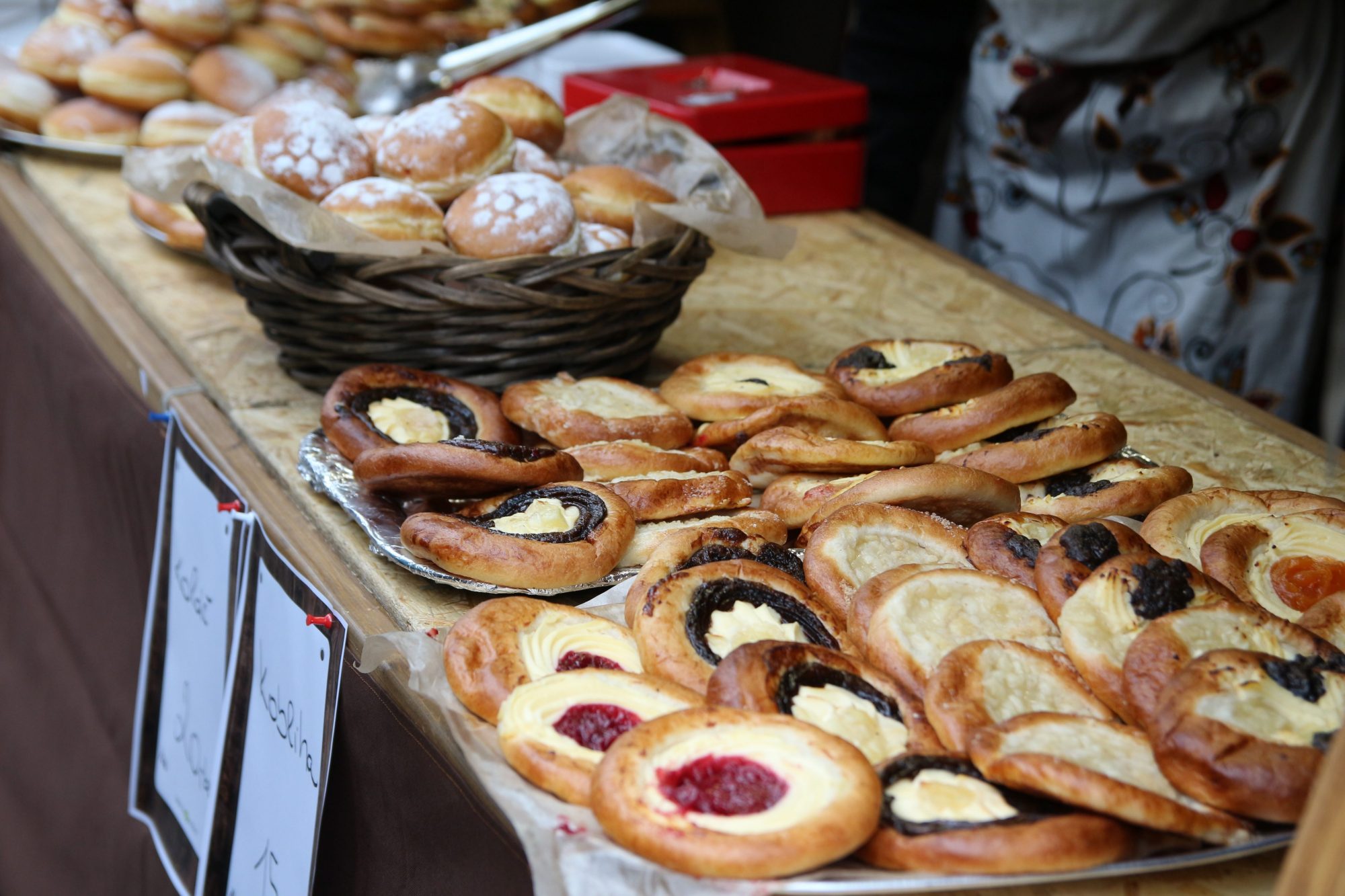
Top 10 Facts about Prague that you have to know
-
Prague’s population is about 1,3 million.
-
Prague is the largest city in the Czech Republic.
-
Prague’s Dancing House won Time Magazine’s design contest in 1997.
-
Prague was the only capital of Czech lands throughout the history and present.
-
The original Czech name is Praha.
-
In 2017 Prague was the 5th most visited European city (after London, Paris, Rome, Istanbul).
-
In 1992 the historical centre of Prague was on the UNESCO list of World Heritage Sites.
-
Prague is the seat of the Czech President, Government, Parliament, Senate and Prime Minister.
-
The oldest university in the Czech Republic is the Charles University, established in 1348.
-
The city’s nickname is the City of Hundred Spires and the Golden City.
What is the best time to visit Prague?
The best times to visit Prague are late spring and fall (April, May, early June, September, October). The weather is perfect, not cold and not hot, and even if it might rain a little bit, it is not that bad. I would recommend skipping Prague in the summer months of July and August. Not only because of many people who visit the city, but the weather can be very hot. Moreover, the temperature can rise to 30-40 Celsius (up to 100F).
Another great time to visit the city is in December, around Christmas and New Year. The city is decorated with lights and Christmas trees and full of Christmas markets. Even if the sunset is quite early and might rain/snow as well, it is still not as cold as in the following months.
Is Prague safe?
Prague is probably one of the safest cities you can visit. It is even very safe for solo travellers. Yet, it is good to be careful about some things or avoid them.
-
Pickpockets. Always keep your valuables safe and watch out for your electronics or bags all the time.
-
Night Prague. Avoid the park in front of the Main Train Station and the upper part of Wenceslas Square. You might meet there some “strangers.”
-
ATMs. You will find many ATMs all over the city. Unfortunately, most of them belong to the private company that charges a big fee. Be wise and use the ATMs in the banks that are all over the city.
Click here to read about the essential things to know when travelling to Prague.
Top 10 things to buy in Prague
-
Beer
-
Wooden toys
-
Koh-i-nor pencils
-
Marionettes
-
Garnet
-
Bohemian crystal
-
Oplatky – spa wafers
-
Alphons Mucha posters
-
Local alcoholic drinks, such as Becherovka, Fernet, Slivovica
-
Books of the most famous Czech writers. Franz Kafka, Milan Kundera, Karel Čapek, Václav Havel (former President of Czechoslovakian and the Czech Republic), Bohumil Hrabal or Jaroslav Seifert (a Nobel Prize-winning writer).
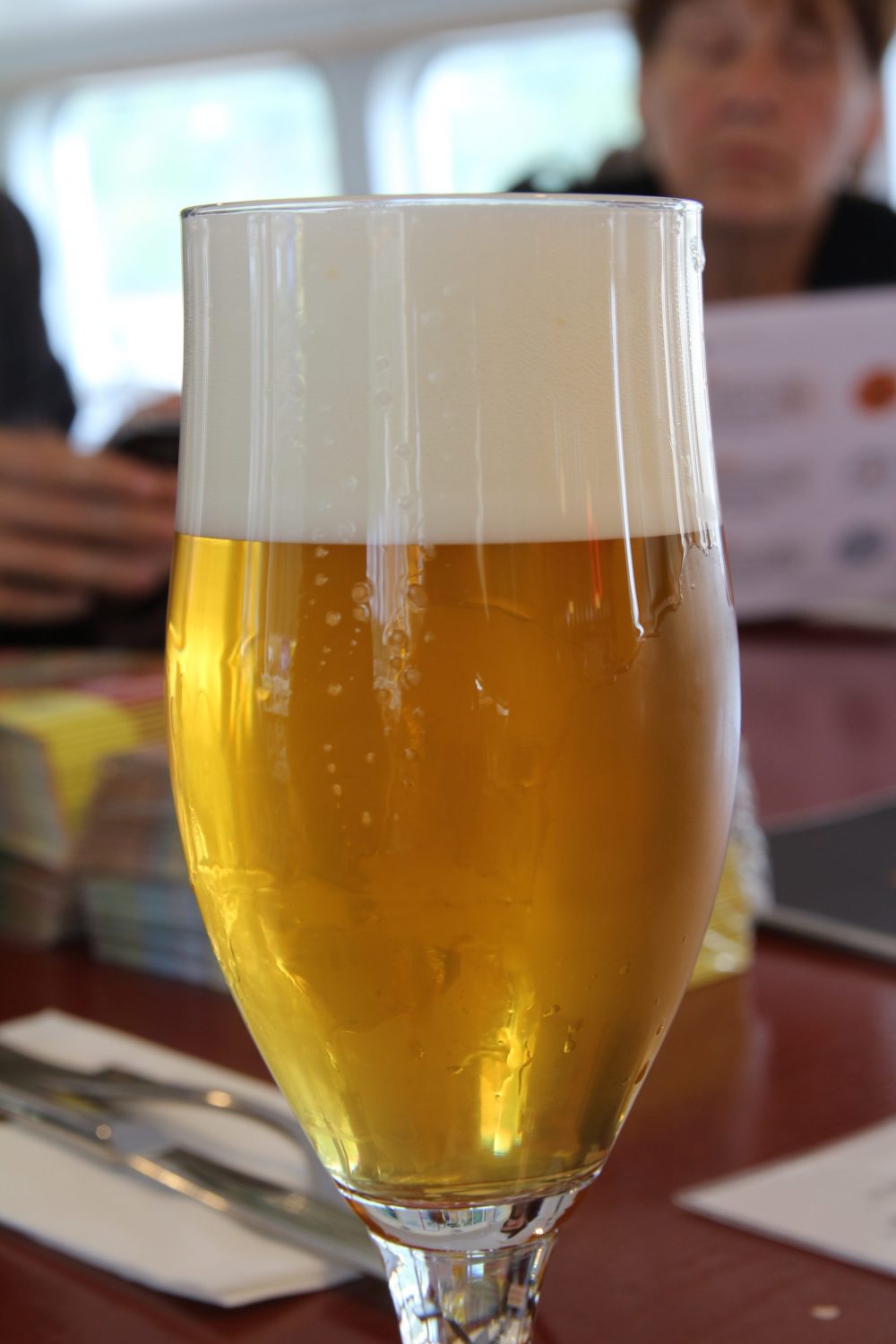
💡 Did you know? Czechs love beer and drink a lot of it. Therefore, beer is very cheap, sometimes even cheaper than water. One of the most popular types is the Pilsner Urquell. However, there are hundreds of breweries and microbreweries in the country. People also consume more beer per capita than any other country. It is about 160 litres of beer per person each year.
Thank you for reading. I hope you enjoy your visit to Prague and discover all its beauties. Feel free to write to me if there is anything you want to ask, add or help with.

